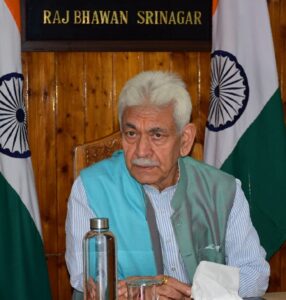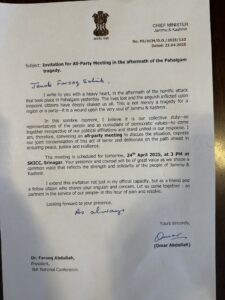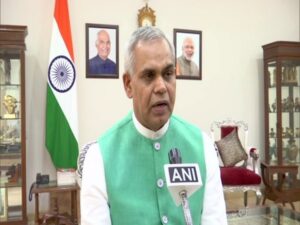PAPA payload aboard Aditya-L1 detects solar wind impact of Coronal Mass Ejections, says ISRO
New Delhi [India], February 23 (ANI): The Indian Space Research Organisation (ISRO) said on Friday that the Plasma Analyser Package for the Aditya (PAPA) payload onboard the Aditya-L1 has been operational and performing nominally.
Its advanced sensors have successfully detected the impact of coronal mass ejections (CMEs) including those that occurred during February 10-11, 2024, an ISRO release dated February 22 stated.
The payload has been operational since December 12, 2023.
The data collected by PAPA revealed the occurrence of Coronal Mass Ejection (CME) events, notably on December 15, 2023, and during February 10-11, 2024, the release mentioned.
According to the release, the CME on December 15, 2023, was a single event.
PAPA observations during this period showed an abrupt increase in total electron and ion counts and the time variations align with the solar wind parameters and magnetic field measurements obtained from the Deep Space Climate Observatory (DSCOVR) and Advanced Composition Explorer (ACE) satellites at the L1 point.
In contrast, the observed variations in electron and ion counts during February 10-11, 2024 are the result of multiple minor events, with differences in the time variations of electrons and ions, it added.
Further, the release stated that the SWEEP and SWICAR sensors on PAPA-Aditya-L1 are currently making continuous observations of solar wind electrons and ions in the default mode, demonstrating that they are performing as per the design in all modes of operations.
The observations made by PAPA emphasize its effectiveness in monitoring space weather conditions and its capability to detect and analyze solar phenomena.
PAPA is an energy and mass analyzer designed for in-situ measurements of solar wind electrons and ions in the low energy range.
It has two sensors: the Solar Wind Electron Energy Probe (SWEEP, measuring electrons in the energy range of 10 eV to 3 keV) and the Solar Wind Ion Composition Analyser (SWICAR, measuring ions in the energy range of 10 eV to 25 keV and mass range of 1-60 amu).
The sensors are also equipped to measure the direction of arrival of solar wind particles.
The PAPA payload is developed by the Space Physics Laboratory and Avionics Entity of the Vikram Sarabhai Space Centre (VSSC)/ISRO.
Earlier in January, India achieved a major milestone placing its first dedicated solar mission, the Aditya-L1 spacecraft, in the Halo orbit.
Aditya-L1 reached Lagrange Point L1 which is about 1.5 million km from earth. The PSLV-C57.1 rocket carrying the Aditya-L1 orbiter lifted off successfully from the Satish Dhawan Space Centre in Sriharikota, Andhra Pradesh, in September last year.
Aditya-L1 has seven different payloads on board to conduct a detailed study of the sun, four of which will observe the light from the sun and the other three will measure in-situ parameters of the plasma and magnetic fields.






